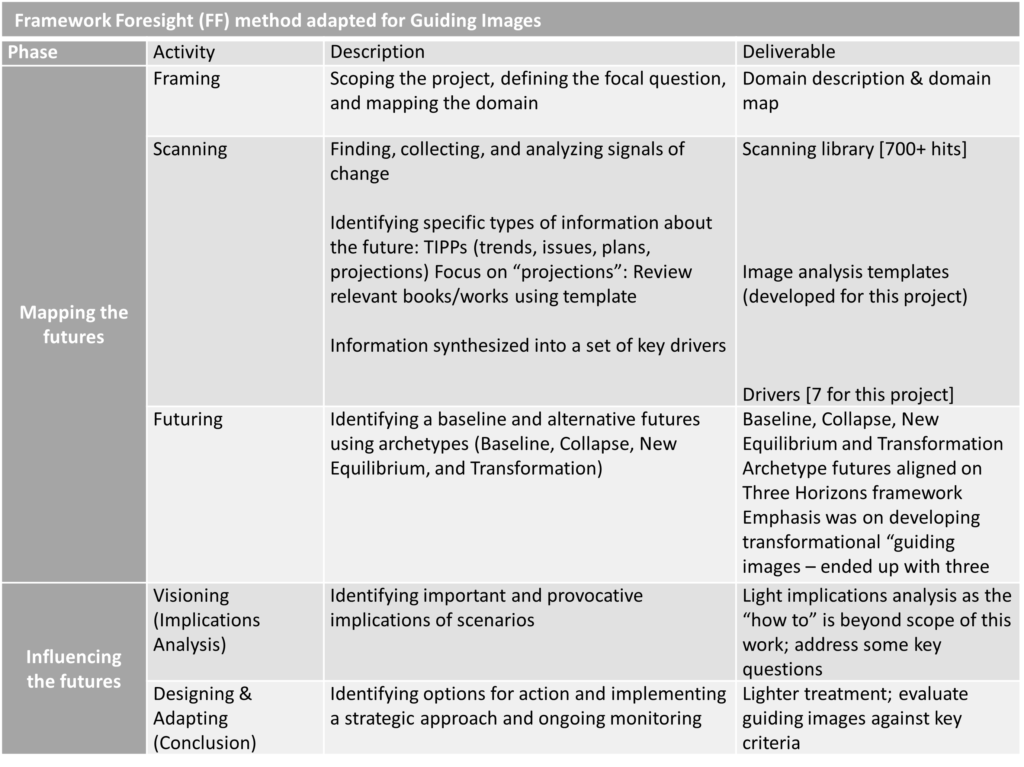I’m pleased that “A Technique for Guiding Images: Imagining the Future After Capitalism” has been accepted for publication in the conference volume from the 2022 Knowledge and Space Symposium on “Placing the Future” in Heidelberg, Germany. In particular I focused on the methodological aspects of creating the After Capitalism guiding images.
When I took up Polak’s challenge to develop these guiding images of the future several years ago, a most obvious question was how to do it. Polak provided some general principles, but not a specific method for doing so. Futurist colleague and U of Houston Adjunct Faculty Wendy Schultz has provided many useful ideas on the topic over the years. Nonetheless it was time to build.

I always start with the Framework Foresight method, as its modular design enables a great deal of flexibility and customization. I’ll note that it aligns with the Association of Professional Futurists (APF) six foresight competencies. The table summarizes the key steps of the FF method, and highlights in bold the modifications made for the development of guiding images. The steps and modifications will be described in more detail after the table.
Framework Foresight observes that there are two major phases in project work: mapping and influencing the futures. Put simply, to explore the future, one first draws a map, and then decides which direction to take.
The most significant modification in the mapping phase of creating the futures was focusing on “projections” as the key research input. There had been a significant number of books directly or indirectly related to the After Capitalism topic – a book about the future of a topic fits as a “projection.” Since a key objective of this work was to synthesize already existing ideas about the topic, this became the key input. More than a hundred books were reviewed, with 52 analyzed in detail, and 28 reviewed with the image analysis template (see appendix) that was developed for this project.
The influencing phase was in general treated much more lightly than in a typical project since the key purpose of the work to identify the guiding images themselves. Practically speaking, if the guiding images prove useful, then a follow-on work on “how to” will be worth the effort. Frankly, first things first – let’s see how our guiding images do. – Andy Hines

[…] and focused upon 27 that had significant ideas for After Capitalism and analyzed them using an “Image Analysis Template” that I crafted for this work. The book also had 454 references. I didn’t make this […]